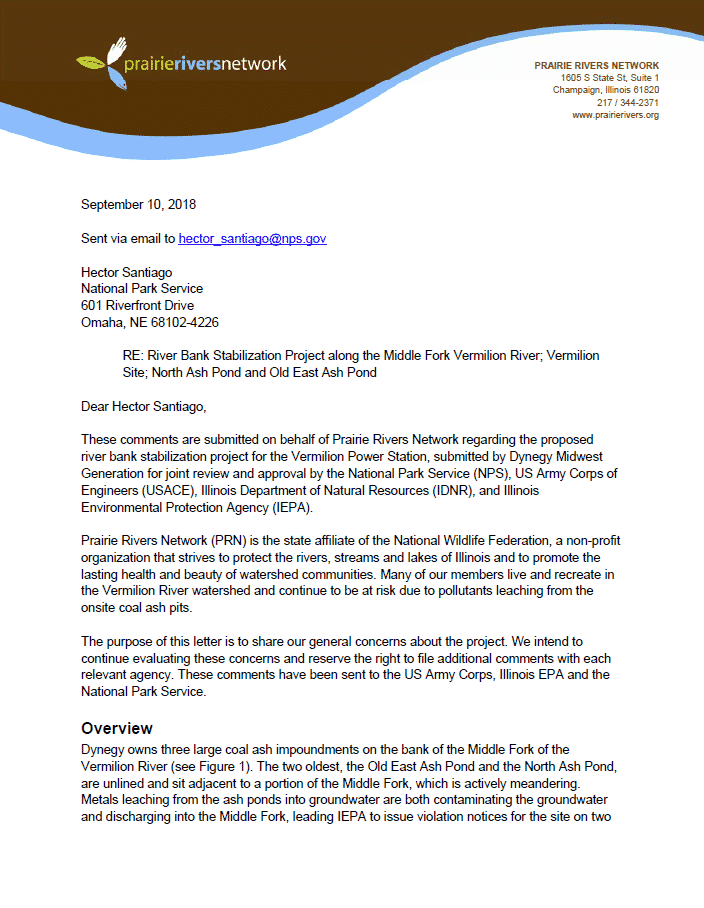Read our full comments here.
Dynegy’s toxic coal ash sits on the banks of the meandering Middle Fork of the Vermilion River. The river is eroding the river bank, threatening to destabilize the dam that contains the coal ash. If erosion destabilizes the dams and toxic coal ash is released, the impact on the river would be immense and permanent. The company is now proposing to bury almost 2000 feet of river bank in rock as a means to stop the erosion.
This proposal amounts to little more than passing the buck to the next owner of the site. The threat of catastrophic failure will continue to exist as long as the ash remains in the floodplain on the path of the meandering river.
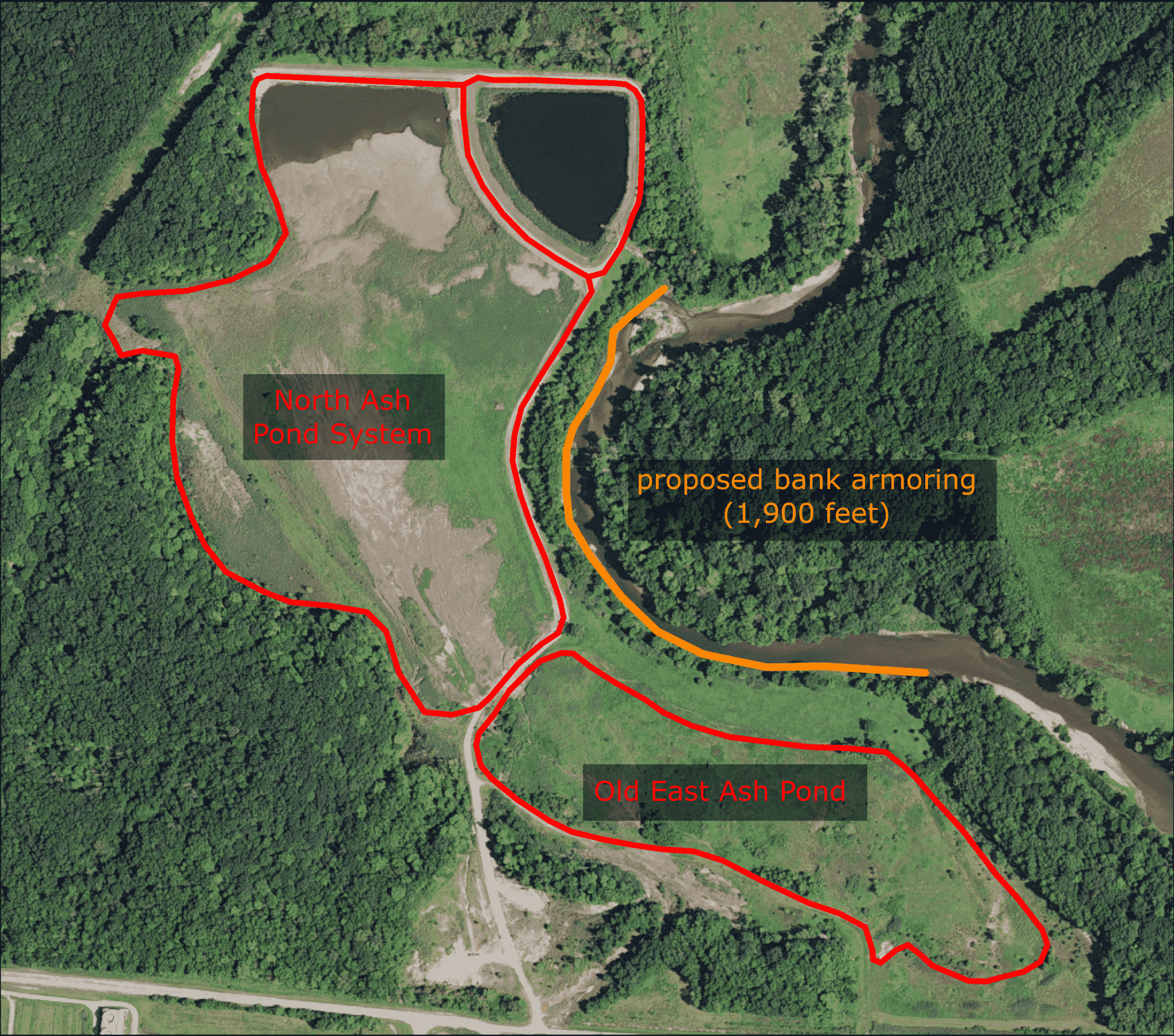
The design resembles a massive scaled-up version of bank armoring on the New East Ash Pond, which Dynegy installed in late 2016. That project, pictured below, will look tiny by comparison. The proposed project is four times the length and uses forty times the amount rock (ten times as much rock per foot of river bank). Imagine breaking up the Washington Monument and spreading it over the river bank. Piles of white stone, not natural to the area, will rise over ten feet above the water. The river bank will be stripped bare for construction, likely felling the trees that currently grow on the bank.
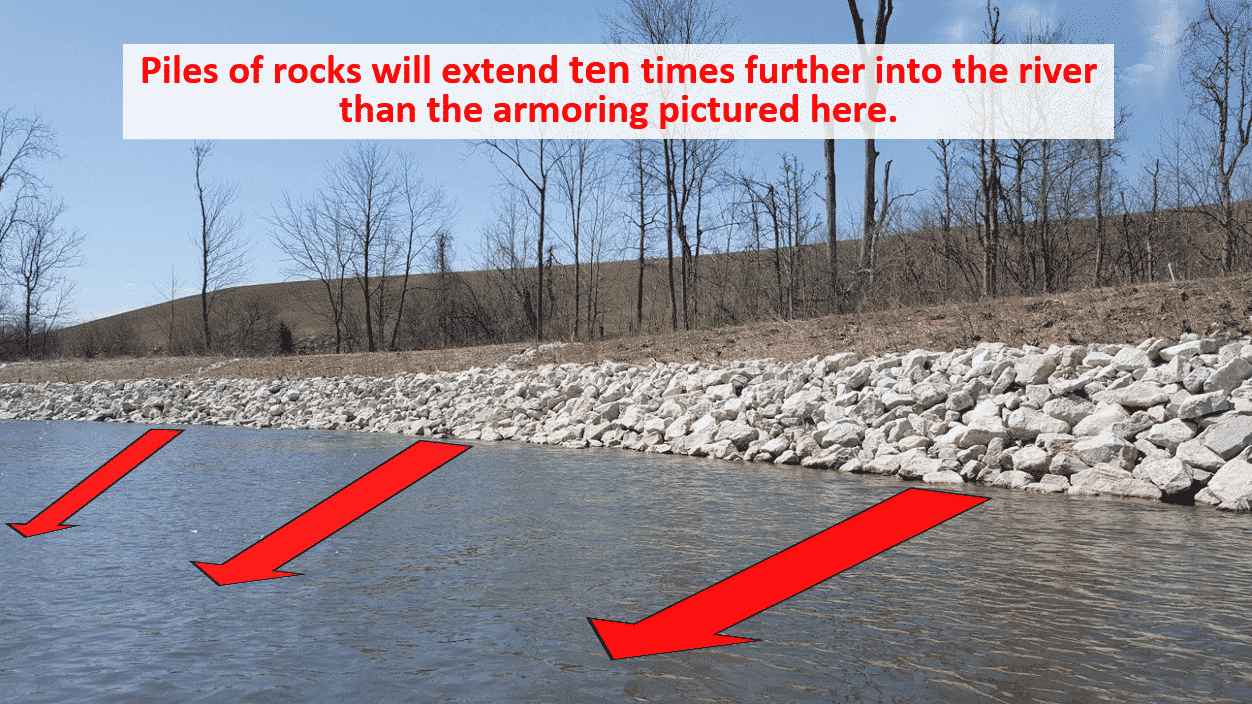
The rocks will squeeze the river, piled over 25 feet into the river’s flow path and effectively reducing the width of the river by nearly half in the tightest sections of the project. It will be among the narrowest sections of the river after the project is completed.
The narrowing of the channel will have unpredicted consequences for other portions of the river. The changes in river flow have not been modeled as part of the design proposal (or have not been made available to government agencies). However, we expect that the opposite river bank and the area just downstream of the bank armoring will experience unnaturally high erosion. Without proper flow modeling, it’s hard to say what the exact effects of this erosion will be.
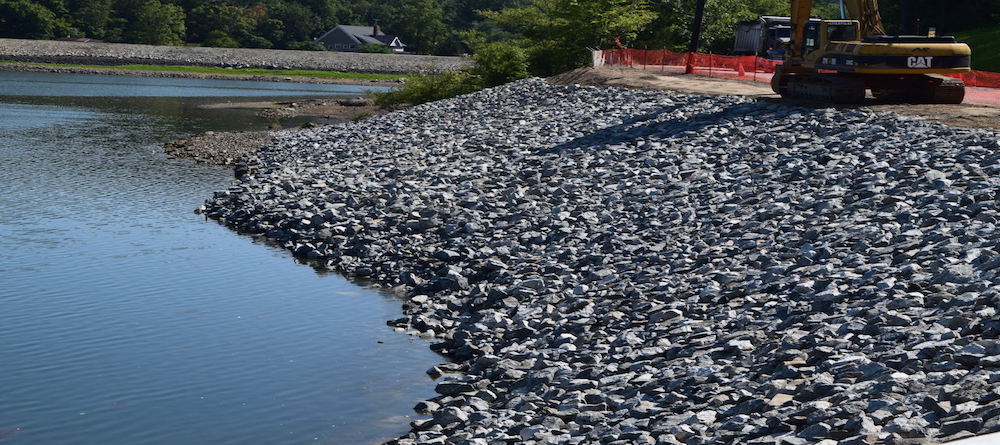
Dynegy’s has submitted a proposal to the US Army Corps, and it will also require consideration from the Illinois EPA and the National Park Service. Prairie Rivers Network submitted comments on the proposal which you can read those in detail here.
The real issue here is the location of the coal ash – not the river. As long as the coal ash is in the floodplain next to the meandering river, there will be need for repeated bank armoring. Indeed, this project includes removal of the previous bank armoring efforts from the 1980s which used gabions. That set of bank armoring was daunting in size, yet despite the magnitude of the 1980s armoring, the river was able to negate its influence with time.
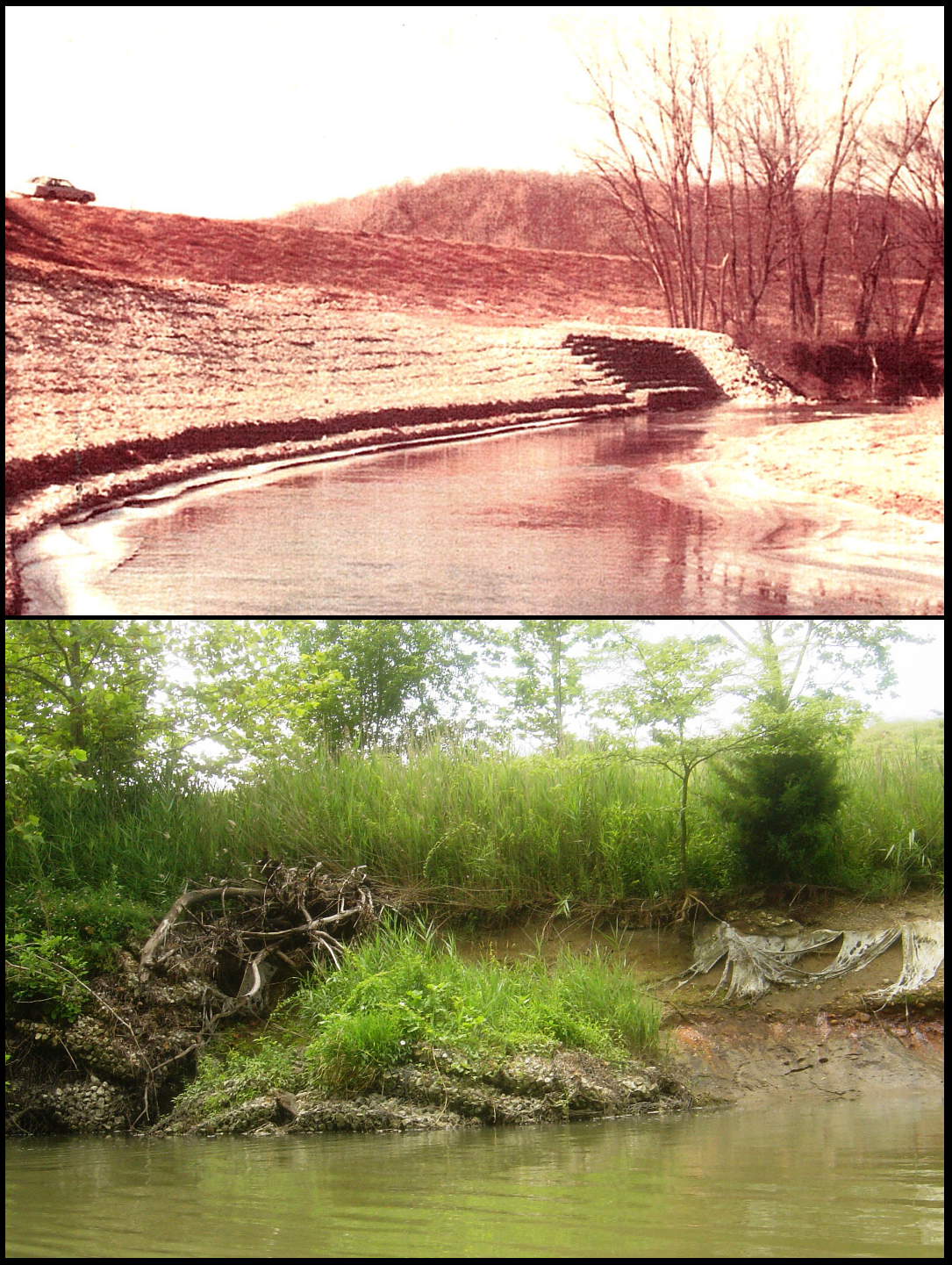
Below) Failed gabions in the present day.
Bank armoring is a temporary practice. One day, this project will also need to be removed and replaced. In recognition of the temporary nature of the practice, the Army Corps and Illinois EPA should require Dynegy to present an alternatives analysis that considers other options for preventing release of coal ash into the river — options that may have a lower impact on the river and lower costs to remove. The alternatives considered may include bank armoring, but only as a temporary measure to protect the Middle Fork long enough to safely and permanently eliminate the coal ash threat by removing the coal ash from the floodplain.
Want to help? Donate to PRN.

